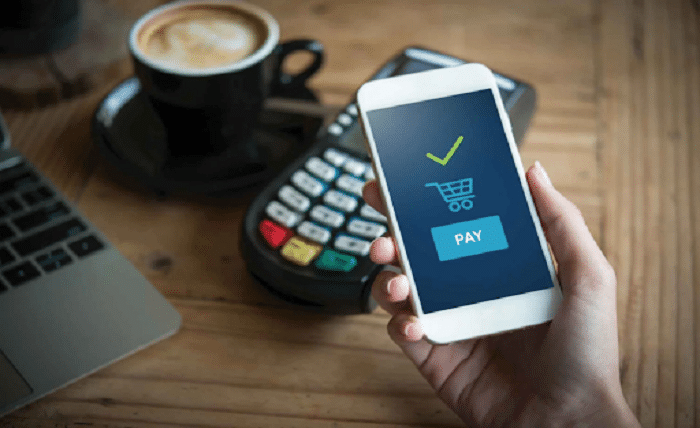In today’s digital age, payment solutions are the backbone of global commerce. Whether for individuals purchasing products online or businesses processing transactions, seamless and secure payment systems are essential. With the rapid evolution of technology, the payment landscape has undergone significant transformation, offering a wide range of solutions tailored to meet diverse needs. This article explores the key types of payment solutions, their benefits, challenges, and the trends shaping the future of payments.
What Are Payment Solutions?
Payment solutions refer to systems, technologies, and services that enable the transfer of money between parties. These solutions facilitate transactions across various channels, including in-store, online, and mobile platforms. By leveraging advanced technologies, payment solutions aim to offer convenience, speed, and security in processing transactions.
Types of Payment Solutions
Credit and Debit Card Payments
Credit and debit cards remain one of the most widely used payment methods globally. They offer a convenient and secure way for consumers to make purchases both online and offline. Card payments are processed through payment gateways and Point-of-Sale (POS) systems, ensuring real-time authorization and settlement.
Bank Transfers
Bank transfers allow individuals and businesses to move funds directly between bank accounts. They are widely used for large transactions, bill payments, and international remittances. With the advent of real-time payment systems, bank transfers have become faster and more accessible.
Mobile Payment Solutions
Mobile payments are growing rapidly, driven by the proliferation of smartphones and mobile apps. Platforms like Apple Pay, Google Pay, and Samsung Pay enable users to pay using their mobile devices, offering convenience and security with technologies like tokenization and biometrics.
E-Wallets
E-wallets, such as PayPal, Venmo, and Alipay, provide a digital alternative to traditional wallets. Users can store funds, link bank accounts, and make payments through a single platform. E-wallets are particularly popular for online shopping and peer-to-peer payments.
Cryptocurrency Payments
Cryptocurrencies like Bitcoin and Ethereum are emerging as alternative payment methods. They offer decentralized and borderless transactions, appealing to tech-savvy consumers and businesses looking for low-cost international payment solutions. However, volatility and regulatory concerns remain challenges.
Buy Now, Pay Later (BNPL)
BNPL services, such as Afterpay and Klarna, allow consumers to make purchases and pay for them in installments. These solutions are gaining traction in e-commerce, providing flexibility for consumers and boosting sales for merchants.
Payment Gateways
Payment gateways are essential for online businesses, acting as intermediaries between merchants and payment processors. They securely capture and transmit payment details, ensuring transactions are processed smoothly and securely.
Core Banking Software
Core banking software plays a vital role as a type of payment solution by providing the technological backbone for financial transactions. It enables real-time payment processing, account management, and compliance with regulatory standards, making it indispensable for modern financial institutions. By integrating with other payment technologies, such as mobile wallets and payment gateways, core banking software ensures seamless operation and enhanced user experiences. This system’s scalability and efficiency make it a cornerstone of the digital payment ecosystem
Integrated Payment Systems
Integrated payment systems combine various payment methods into a unified platform. These solutions are popular among businesses looking to streamline operations and offer multiple payment options to customers.
Benefits of Modern Payment Solutions
- Convenience: Modern payment solutions eliminate the need for cash, offering faster and more efficient ways to complete transactions. Whether through a mobile app or a contactless card, users can make payments with minimal effort.
- Enhanced Security: Advanced technologies like encryption, tokenization, and biometric authentication have significantly improved payment security, reducing the risk of fraud and data breaches.
- Global Reach: Payment solutions enable businesses to operate on a global scale by supporting multiple currencies and cross-border transactions. This opens up new markets and revenue streams.
- Improved Customer Experience: Offering diverse payment options enhances customer satisfaction, making it easier for them to complete purchases. Features like one-click payments and recurring billing further streamline the process.
- Cost Efficiency: Digital payment solutions reduce the costs associated with handling cash and checks, including storage, transportation, and processing fees. Automation also lowers administrative expenses.
Challenges in Implementing Payment Solutions
- Security Risks: Despite advancements, payment systems remain a target for cyberattacks. Businesses must invest in robust security measures to protect sensitive data.
- Regulatory Compliance: Payment solutions must adhere to complex regulatory requirements, including data protection laws, anti-money laundering (AML) standards, and Know Your Customer (KYC) protocols.
- Integration Complexity: Integrating new payment solutions with existing systems can be challenging, requiring technical expertise and significant investment.
- Consumer Trust: Building trust is crucial for the adoption of new payment technologies. Consumers need assurance that their data and transactions are secure.
- Cost of Adoption: Implementing advanced payment solutions can be expensive, particularly for small businesses. Costs include software, hardware, and ongoing maintenance.
Trends Shaping the Future of Payment Solutions
- Contactless Payments: The adoption of contactless payments has surged, driven by consumer demand for faster and safer transactions. This trend is likely to continue as more businesses adopt NFC-enabled terminals.
- Artificial Intelligence (AI) in Payments: AI is transforming payment solutions by enabling personalized experiences, fraud detection, and predictive analytics. Chatbots and virtual assistants are also being integrated into payment platforms.
- Blockchain Technology: Blockchain offers secure, transparent, and efficient payment systems. Beyond cryptocurrencies, blockchain is being used to streamline cross-border payments and reduce settlement times.
- Open Banking: Open banking initiatives are reshaping the payment landscape by enabling third-party providers to access banking data. This fosters innovation and competition, leading to better services for consumers.
- Biometric Authentication: Biometrics, such as fingerprint and facial recognition, are becoming standard in payment solutions, offering enhanced security and convenience.
- Internet of Things (IoT) Payments: IoT devices, from smartwatches to connected cars, are being equipped with payment capabilities, creating new opportunities for seamless transactions.
Choosing the Right Payment Solution
When selecting a payment solution, businesses should consider the following factors:
- Target Audience: Understand the payment preferences of your customers. For example, younger consumers may prefer mobile payments, while older demographics might favor traditional methods.
- Business Model: Choose a solution that aligns with your business model. E-commerce businesses may prioritize payment gateways, while brick-and-mortar stores might focus on POS systems.
- Scalability: Ensure the solution can scale with your business as it grows, supporting increased transaction volumes and new markets.
- Security Features: Look for solutions that offer robust security measures, including encryption, tokenization, and compliance with industry standards.
- Cost: Evaluate the costs involved, including setup fees, transaction fees, and ongoing maintenance. Compare these with the potential benefits to ensure a positive ROI.
Conclusion
Payment solutions are an integral part of modern commerce, enabling businesses to operate efficiently and meet the evolving needs of their customers. From traditional card payments to cutting-edge technologies like blockchain and biometrics, the options are diverse and continually expanding. By understanding the types, benefits, and challenges of payment solutions, businesses can make informed decisions that drive growth and enhance the customer experience. As technology continues to evolve, the future of payment solutions promises even greater innovation, making transactions faster, safer, and more accessible for everyone.





